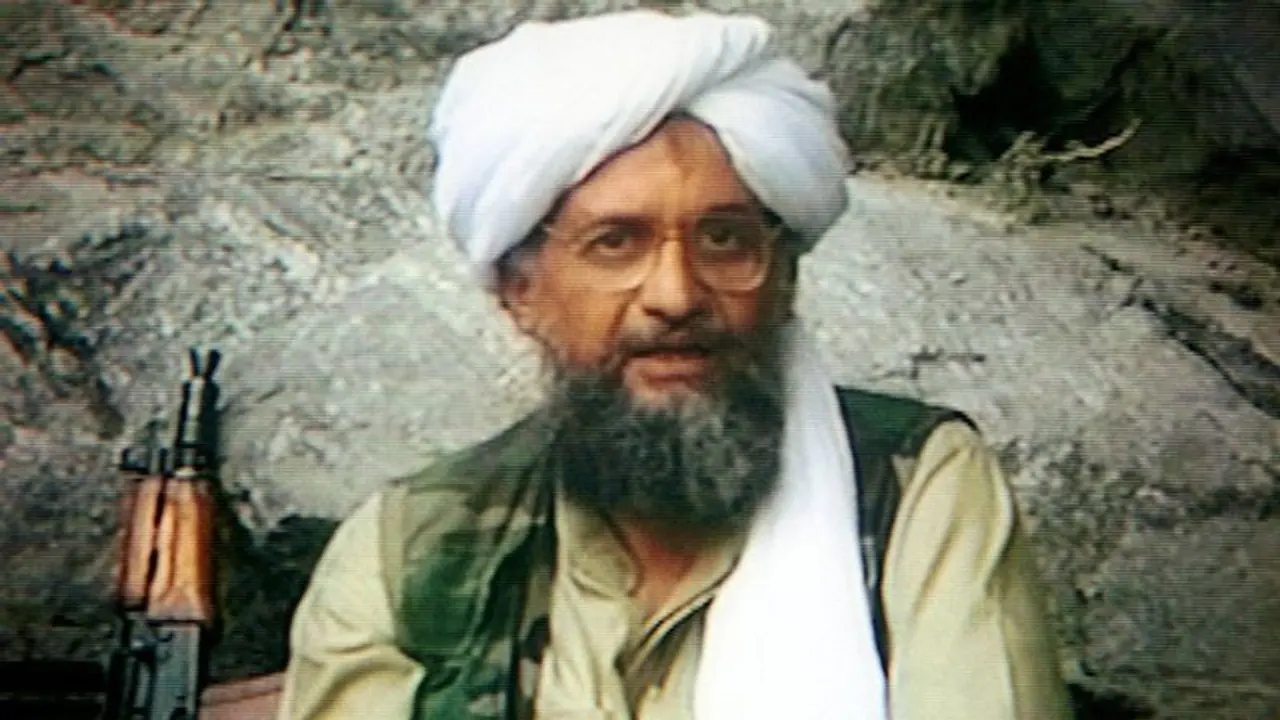President Joe Biden stated on Monday that an American drone strike had killed al-Zawahiri, a key architect of the 9/11 attacks who succeeded Osama bin Laden as head of al-Qaeda after the latter's death in Pakistan in 2011.
Al-Qaeda leader Ayman al-Zawahiri was killed in a precise US drone hit at a safe house in Kabul on Tuesday, but according to a media report, members of the infamous Haqqani network allegedly tried to hide his presence there and blocked access to the location.

President Joe Biden stated on Monday that an American drone strike had killed al-Zawahiri, a key architect of the 9/11 attacks who succeeded Osama bin Laden as head of al-Qaeda after the latter's death in Pakistan in 2011. Al-Zawahiri was killed at a safe house in Afghanistan.
Also read: Story of Kabul betrayal and US plan to kill Ayman al-Zawahiri
Al-Zawahiri, 71, was the organisation's No. 2 when al-Qaeda carried out the terrorist attacks on September 11, and American officials regarded him as a key plotter. Even though he lacked bin Laden's charismatic leadership, his writing and views had a significant impact on al-Qaeda and its terrorist movements.
"After the US drone strike that killed al-Zawahiri, members of the terror group Haqqani network had tried to conceal that the al-Qaeda leader was at the house in Kabul, which reportedly was owned by a top aide to Sirajuddin Haqqani, and restricted access to the site," The New York Times reported.
The report citing a senior administration official said that according to one American analyst, the "house that was struck was owned by a top aide to Sirajuddin Haqqani," who is now the interior minister in the Taliban government in Kabul.
Jalaluddin Haqqani, who rose to prominence as an important Afghan warlord and guerrilla commander during the anti-Soviet war, formed the Haqqani network, an Islamist terrorist organisation. According to the article, al-Zawahiri was killed in the strike according to "multiple intelligence threads" that the US had. Al-Zawahiri was long thought to reside in Pakistan.
"That he was killed in Kabul is a testament to not only the porous border between the two countries but also to Al Qaeda's decades-long use of facilities, houses, buildings and compounds throughout both countries," the report said, citing a US official.
Also Read: Who was Ayman al-Zawahiri, the Al Qaeda head with $25 million bounty on his head?
"And unlike the relatively sleepy city of Abbottabad, Pakistan, where Bin Laden was killed by a commando raid in 2011, his successor apparently spent the last weeks of his life right smack in the Afghan capital," it said.
The report further said that American intelligence sources had learned earlier this year that al-Zawahiri's wife, daughter and grandchildren had relocated to a house in Kabul.
"American intelligence agencies grew increasingly confident that al-Zawahiri was at the house as well. As they did in the case of Bin Laden, intelligence officials used different sources and methods to build a so-called pattern of life that confirmed his presence," the report said, quoting officials.
"Once al-Zawahiri arrived at the location, American officials were never aware of him leaving, and he was observed for sustained periods on the balcony where he was ultimately struck," it said.
An R9X Hellfire missile, which had long blades and was designed to kill targets with kinetic energy while causing the least amount of significant collateral damage, was used to kill Al-Zawahiri.
Also Read: 'Justice has been served': Hellfire missiles take out Al-Qaeda chief Ayman al-Zawahiri in Kabul
With al-Zawahiri's death, all of top plotters of the September 11, 2001, terrorist attacks are now either dead or captured. The FBI updated its "Most Wanted Terrorist" poster on Monday with al-Zawahiri's status: "Deceased."
The Taliban allegedly broke the terms of the peace deal by allowing al-Zawahiri entry, according to the US. The Taliban asserts that by carrying out a strike, the US broke the terms of the peace accord.
(With inputs from PTI)
